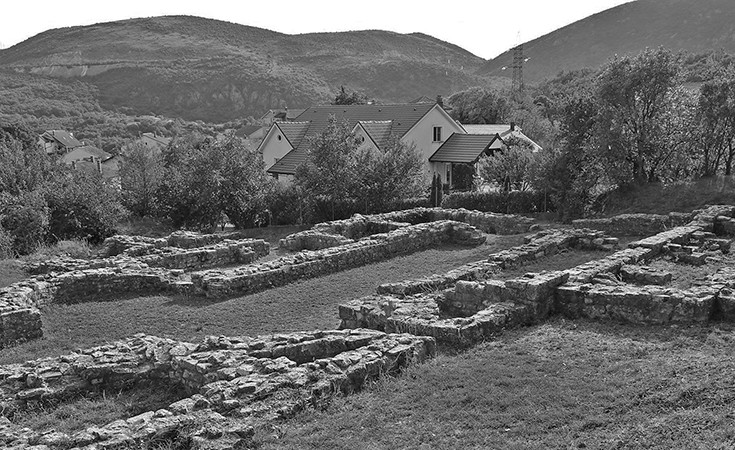
The Basilica in Cim - The area of Cim was inhabited during the Roman Empire. An ancient settlement was discovered on a gentle slope, in which a basilica was built in late antiquity. Excavations have found the remains of an early Christian basilica, and in Crkvine, in the Cim area, three late antique buildings from the same period were discovered: a basilica, a memorial (grave chapel) and a residential building. In the Middle Ages, the dead were buried there. The basilica is spread over three floors, due to the slight slope of the land in a north-south direction. The northern part is buried in the ground.
One nave and three apses of the basilica were built outside the east wall. The basilica consists of a narthex, a nave, a presbytery, a baptistery, and two rooms on the south side. The narthex is rectangular and extends along the entire basilica. Along the south wall, two tombs of simple stone slabs were discovered. The nave is connected via an entrance to the narthex. The presbytery consists of three semicircular apses and in the inner edge of the semicircular wall the northern apses are covered with thick slabs on which is a layer of stones with plaster. In the central apse was found the "tomb of power" at the bottom of which were the mounds of three powerful men. North of the nave is a baptistery which was entered from the narthex through an opening. The expanses were three steps apart.
In the southern part of the nave there are two rooms which are considered to be diaconicon and prosthesis. Both are entered through special openings. Two rooms of unknown purpose are next to the north wall of the basilica, ie a separate entrance. The basilica itself is of solid construction of solid stone stacked in rows. The material used to build it is soft sandstone, tufa and conglomerate. The floor was preserved in the southern part of the building, and excavated in the northern part. The roof was tiled. The tomb chapel is built of smaller stones and extends in a west-east direction. The tomb chapel with three apses is considered to be similar to those of the basilica. The remains of a late antique residential building are located 150 meters west of the basilica.
On January 20, 2004, the archeological site with the remains of a late antique basilica of memory and a residential building and part of the movable heritage located in the Museum in Mostar was declared a national monument of Bosnia and Herzegovina
Author of the aricle

Amila Hasečić - contact: [email protected]